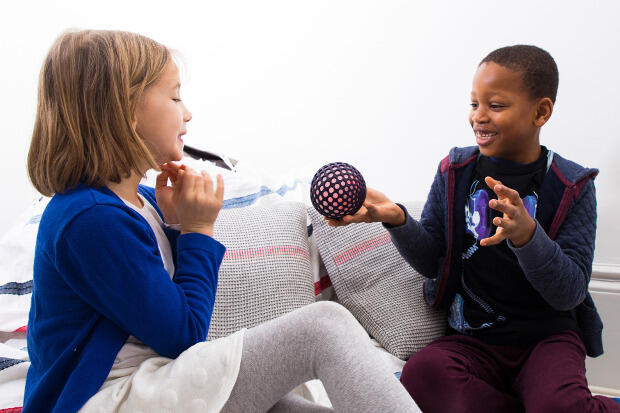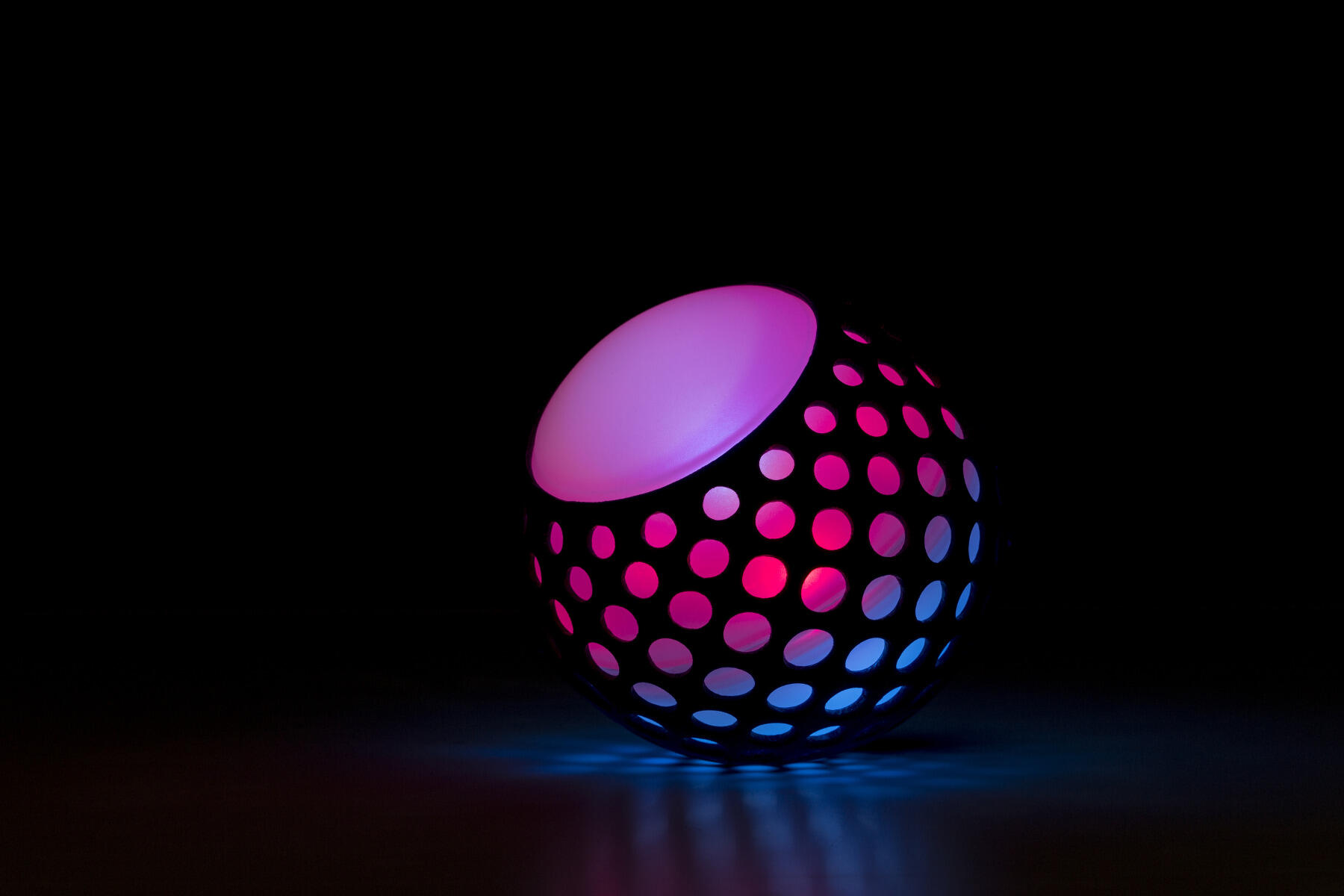
March 24, 2016
Brandcenter alumna helps roll innovative toy into the marketplace
Share this story

It has been the object of games for centuries, so how does a ball become one of Time magazine’s best inventions of 2015?
The ball is Hackaball, and it’s a serious technological advancement over the soccer ball or basketball. Using a simple app on a mobile device, children can program Hackaball to play traditional games such as “hot potato” or they can create their own unique gameplay. With the correct coding, the ball will also change colors, vibrate and make sounds at the programmer’s whim. Put simply, Hackaball is a computer you can throw around with your friends in the backyard.
“The Time list came something like eight months after the initial launch, and it was just a massive validation,” said Rachel Mercer, a 2012 Virginia Commonwealth University Brandcenter graduate. “We do genuinely believe it's a very unique product in the space, and we're very proud to see it on that list.”
Made by Many, a London-based consultancy where Mercer was a senior product strategist, invented the Hackaball prototype as a side project before placing it on Kickstarter to raise cash. The Kickstarter campaign raised $240,000 and Mercer’s role in the early days of Hackaball was to create a strategy to get it on the market quickly. Mercer and her strategy teammates tested Hackaball during a series of play dates with London-based families.
“We needed to know whether or not kids would play with it more than once, what moms and dads felt like it needed to do in order to be worth the price tag and what the price should even be in the first place,” Mercer said.
Hackaball is marketed as a fun option that bridges the gap between technology and socialization — a simple toy that separates children from their computer and tablet screens, yet helps them learn the logic of programming and encourages creative thinking and outside play. To Mercer, it was also paramount that it be a tech toy designed for and marketed to both boys and girls.
These stereotypes are incredibly powerful and have a massive impact even if it's not one consciously realized by children.
“I think that if you look around in the industry today you see a lot of rhetoric around the lack of diversity in [toy] technology,” Mercer said at the Geek Girl Meetup conference in 2015. “A lot of this evidence for why this is the case is based around systemic marketing and cultural practices which define toys or activities as being for girls or for boys. These stereotypes are incredibly powerful and have a massive impact even if it's not one consciously realized by children.”
Technology has traditionally been buried in gender-based narratives for toys such as the electronic superhero that talks or the princess-themed laptop. Mercer says how children interact with gender-defined toys can have a lasting impression on them. She references research conducted by NPR in 2014 that determined the rate of women entering the computer science field increased steadily in the 1960s, ’70s and early ’80s and then declined in the mid-1980s, with men dominating the field to the present day. The study found that 1984 was precisely the point when the personal computer entered the marketplace. Consciously, or unconsciously, these computers were marketed with advertising narratives of boys typing on the computers or groups of boys playing video games together.
“So we started to ask ourselves, if we’re building a product that supposed to help kids get excited about technology and learn the fundamentals of programming, how can we make it something accessible for both boys and girls,” Mercer said. “This [foundation] allowed for us to make really simple additions, from pushing back on color or language choices to integrating key questions into the user testing, that allowed us to make Hackaball as inclusive and accessible as possible.”
After a rigorous testing process that involved asking girls and boys for feedback on everything from the icons used on the app to the color of the ball in the packaging, Mercer and her team stripped away any indication where Hackaball could be mistaken for anything other than a universal toy in the toy aisle. The total team effort is something Mercer keenly understood as a student at the Brandcenter.

“I like to think of Brandcenter as a bit like a crucible,” Mercer said. “But in the end you come out newly forged [and] better than before. I think that the best work comes from when a team feels really fluid and comfortable with one another. Your best strategy might come from your copywriter, and the best line from a strategist. I believe Brandcenter builds that confidence and trust.”
While Mercer learned much from all her professors at Brandcenter, she particularly credits Caley Cantrell, a professor of strategy in the Brandcenter, with igniting her passion to succeed as a woman in the advertising industry.
I like to think of Brandcenter as a bit like a crucible.
“I feel a great amount of pride that Rachel has succeeded this wonderfully with these ideas,” Cantrell said. “I am proud that she chose to spend two years here and that she believes that she got a lot out of it. Not every student is going to come up with a Hackaball. That’s not a guarantee. You have to be able to see the opportunity. You have to be able to realize the opportunity by putting time and effort into it.”
Hackaball is currently in the first stages of production and so far has sold 3,000 balls worldwide. Mercer has moved to a new innovation consultancy in London, yet she will always look upon her time as a team member at Made by Many and Hackaball with great pride.
“I do hope that it just sets those early foundations for young women to take something apart, learn how to control it and experience active play,” she says. “I think that is the biggest impact that we can have — empowering young girls to realize their own creativity and ability to create.”
Subscribe for free to the weekly VCU News email newsletter at http://newsletter.news.vcu.edu/ and receive a selection of stories, videos, photos, news clips and event listings in your inbox every Thursday.
Subscribe to VCU News
Subscribe to VCU News at newsletter.vcu.edu and receive a selection of stories, videos, photos, news clips and event listings in your inbox.













